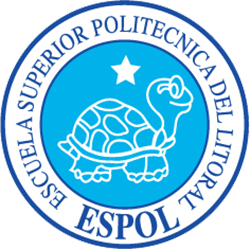
Comillas Pontifical University is a private Catholic higher education institution run by the Spanish Province of the Society of Jesus in Madrid, Spain. The university is involved in a number of academic exchange programmes, work practice schemes and international projects with over 200 institutions of higher education in Europe, Latin America, North America and Asia.

The National Technological University is a country-wide national university in Argentina, and considered to be among the top engineering schools in the country. Hosting over 85,000 students, its student body is comparable to Argentina's third-largest university and exceeded significantly only by the University of Buenos Aires (UBA). It has 29 semi-independent branches of various sizes located all over the country.
Balseiro Institute is an Argentine academic institution that belongs partially to the National University of Cuyo and partially to the National Atomic Energy Commission. It is located in Bariloche, Río Negro province, Argentina. Notable alumni of this institute include Marcela Carena, Juan Maldacena, Juan Ignacio Galvan and Jorge Pullin.

The National University of Rosario is a research public university located in the city of Rosario, province of Santa Fe, Argentina.

The Faculty of Exact Sciences, Engineering and Surveying of the National University of Rosario (UNR) is an institution of higher learning in Rosario, Argentina.

The National Atomic Energy Commission is the Argentine government agency in charge of nuclear energy research and development.

The National University of Tucumán is an Argentine national university located in Tucumán Province and the largest in Argentina's northwest region. Founded on 25 May 1914 in San Miguel de Tucumán, access to the university is unrestricted and free of charge.

The National University of San Juan is a public university in Argentina. Its seat is located in the city of San Juan, capital of the province of the same name, in the Cuyo region. It was founded in 1973, based on several local institutions and a faculty of the National University of Cuyo.

The National University of the Northeast is an Argentine national university. It is located in the cities of Corrientes and Resistencia, capital cities of the Provinces of Corrientes and Chaco respectively, and was established on December 4, 1956. Known as the University of the Sun, it was the seventh-largest university in Argentina by student enrollment numbers as of 2017.

Sabato Institute of Technology is an academic institution that belongs partially to the National University of General San Martín and partially to Argentina's National Atomic Energy Commission. It is named after Jorge Alberto Sabato, Argentine physicist and technologist distinguished in the field of metallurgy.

The Faculty of Engineering of the National Autonomous University of Mexico is the division of the aforementioned university in charge of engineering and applied studies in the physical and natural sciences. At the undergraduate level, it offers thirteen majors and some graduate programs. In fall 2008, the school of engineering had over 10,900 undergraduate students and 1,115 graduate students and postdocs. Chemistry and chemical engineering are offered neither by the School of Engineering nor the Faculty of Sciences, but by a separate Faculty of Chemistry.

The National University of the South is the largest national university in southern Argentina.

The University Center of Exact Sciences and Engineering (CUCEI) is the entity from the University of Guadalajara in Mexico which focuses in the fields of engineering, physical sciences, chemistry and mathematics. The CUCEI currently serves 14,581 students in 18 undergraduate and 18 postgraduate programs. It also has 216 researchers of the National System of Researchers (SNI) and 380 professors with recognition from the Teacher Professional Development Program (PRODEP).

The Escuela Superior Politécnica del Litoral (ESPOL) is a public university located in Guayaquil, Guayas Province in Ecuador. ESPOL has five faculties or schools, fifteen research centers, and several associated centers providing twenty-six undergraduate and ten master's degrees.

The School of Chemistry is one of the 27 academic institutions that are part of the National Autonomous University of Mexico (UNAM). The School carries out research activities in the fields of biochemistry, analytical chemistry, organic chemistry, physical chemistry, food chemistry, biotechnology, metallurgy, chemical engineering, pharmacy, inorganic chemistry, nuclear chemistry, theoretical chemistry and theoretical physics. The School is organized into 12 scientific departments and 4 units.

Karen Astrid Hallberg is an Argentine scientist and professor of physics at the Balseiro Institute. and at the Bariloche Atomic Centre. Se was awarded the 2019 L'Oreal-UNESCO Award for Women in Science Laureate.

The Faculty of Veterinary Sciences, also simply known as Veterinaria, is a faculty of the University of Buenos Aires (UBA), the largest university in Argentina. It was founded as an autonomous faculty in 1972, when it was split from the Faculty of Agronomy and Veterinary Sciences, which was originally founded in 1904 as the Instituto Superior de Agronomía y Veterinaria.
Mariano Zamorano Diez was an Argentine geographer.. He was vice president of the International Geographical Union between 1968 and 1976. In 1985, he was designated “Commandeur of the Ordre des Palmes Academiques” by the French Republic.























